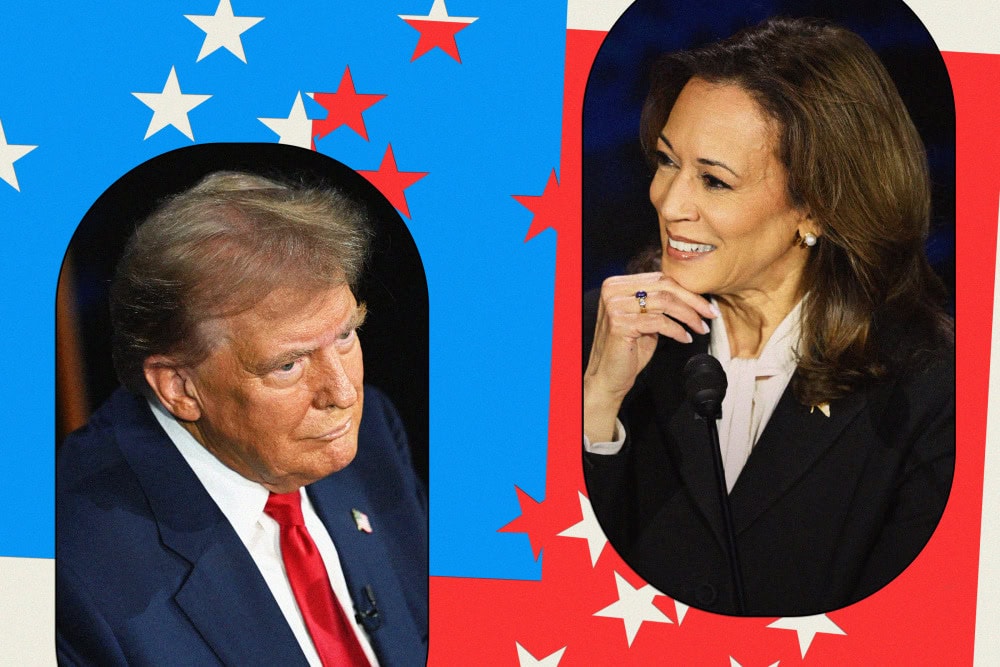To inaugurate the American electoral season, Robert Y. Shapiro delivered a conference on the Reims campus about “Partisan conflict and US politics” on September 23.
Through his speech, the professor and former chair of the Department of Political Science at Columbia University gave us an overview of the history of partisan hostility in American political life, an essential issue of the upcoming presidential election.
Professor Shapiro kicked off his conference with a striking statement: today, partisan conflict has become so extreme that it can be compared to the polarization experienced during the Civil War.
Before rushing into worst-case scenarios and imagining that a second civil war is imminent for the USA, we are faced with the need to explain the history of partisan conflict. Analyzing the paradoxes of this phenomenon reveals how the upcoming elections are challenging American democracy – and also shedding light on how to save it.
The Civil War marked the genesis of partisan hostility while paving the way for the paradoxical appeasement of American politics based on a discriminatory measure. At the end of this conflict which lasted from 1861 to 1865, the Republican federal troops occupied the South during the Reconstruction era. This 12 year-long period aimed to grant rights to newly freed slaves while reintegrating the former Confederate states into the Union. Democrat slave owners’ opposition to the federal occupation took shape as the Redeemers’ coalition, which started to evict the Republicans to reassert white supremacy in the South.
Between partisan tensions and election fraud suppressing the black vote, the contentious 1876 presidential election marked a turning point in American history (sounds familiar, right?). Since the recognition of his victory depended on the South, Republican candidate Rutherford B. Hayes agreed to remove the Union troops in exchange for the South certifying his victory. This swap is known as the Compromise of 1877, ending the Reconstruction era and allowing the South to pass the Jim Crow Laws enforcing segregation.
The Compromise of 1877: How a discriminatory backroom deal pacified America for almost a century.
Here lies the paradox of this unfair measure triggering resentment among African Americans. By setting aside the racial question from the federal political agenda, it appeased polarization and allowed mutual tolerance to grow between Democrats and Republicans.
During most of the 20th century, partisan polarization was pacified since parties were heterogeneous and internally divided about slavery. For instance, progressive Republicans and Democrats would advocate for granting more rights to African Americans, while Southern Democrats and conservative Republicans would defend white supremacy. In fact, in the 1950s, the lack of differentiation between both parties was criticized. The American Political Science Association even filed a report stating that responsible parties should offer a wider range of choices to voters.
This era of appeasement would soon be ended by the Civil Rights Movement. Both the Civil Rights Act and the Voting Rights Act, passed in 1964 and 1965, led to the reconfiguration of parties. Given President Lyndon B. Johnson’s support for the bills, the Democratic Party was consecrated as the progressive advocate of civil rights, while the “Grand Old Party” embodied the racial status quo. Not only did the parties shift, but the electorate did as well, since the former white Southern Democrats rallied to the Republicans.
As a consequence, the division of the electorate was not only based on ideology but also on identity and community belonging. For instance, in their book How Democracies Die, Steven Levitsky and Daniel Ziblatt emphasize that while 44 % of Democrat voters were non-white or immigrants in 2012, the Republican electorate continues to rely on an almost exclusively white electoral base. As emphasized by Professor Shapiro, such polarization leads to an “affective partisanship” and an “emotional debate” since voters feel threatened by the rival party.
Party membership also influences the way American citizens perceive reality, leading to “alternative facts.” Such a phenomenon is exacerbated by the rise of extremism and fake news among the media, all the more so since Republicans tend to pick politicized media outlets promoting intolerant speech, like Fox News. For instance, during the 2008 presidential election, far-right media conveyed “birther” theories regarding Barack Obama, and as a result, in a 2011 poll conducted by Fox News, 37 % of Republicans thought that Obama was not born in the United States.
As a result, a two-sided reality is building up in American citizens’ minds, which worsens party hostility. Professor Shapiro exemplified it by sharing these striking statistics: in 1960, 4 % of Democrats and 5 % of Republicans would have been displeased if their child married someone from the rival party. In 2010, these numbers rose up to 33 % of Democrats and 49 % of Republicans according to the polling firm YouGov. Similarly, a poll conducted by the Pew Research Centre found that in 2016, respectively 49 and 55 % of Republicans and Democrats feared the opposing party.
As the elections draw near, such a dichotomy is revealed to be very hazardous for American democracy. Indeed, presidential democracies rely on a “winner-takes-all” system implying a total shift of the administration, which may lead to frustration and violence for the losing side.
At this point, we cannot help thinking about the assault on the Capitol by Trump supporters on January 6, 2021. Should we expect a repeat scenario if Trump were to lose again? What would the future of partisan conflict look like in this case?
Analyzing the history of party polarization proves to us that the hope for the USA to be reunified lies in not repeating past mistakes. For the own survival of the party and before extremism reaches a point of no return in a radicalized GOP, Republicans are faced with the duty to set aside short-term interests to prioritize the safeguard of democracy. It is necessary for them to be brave enough to reshape their party entirely, change its program, limit the external influence of far-right media and lobbies, marginalize extremists, and resist the temptation of populism. As for the Democrats, it is time for them to rally white working class support, but not at the expense of minorities’ rights. Far from giving up on identity politics, making American society fairer by adopting a universal welfare state system could unify all the citizens, especially by defusing Republican stigmatization of so-called racialized groups supposedly taking advantage of public resources.
All in all, it is imperative for the USA not to let partisan hostility overwhelm democracy. Hence the need to foster constructive cooperation promoting long-term democratic interests without dismissing any part of society.
Professor Shapiro showed us that no matter who wins, the 2024 presidential election will be a milestone for the USA, suggesting the need for American democracy to rethink its partisan system in order to survive.
Other posts that may interest you:
Discover more from The Sundial Press
Subscribe to get the latest posts sent to your email.





